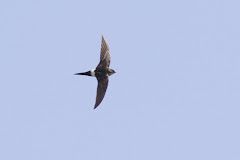Today I got up at the unearthly hour of 3am. The fact that I didn't get to sleep until 11pm the night before caused my body to complain a little but it was worth it. The reason for the early start was to meet up with fellow Norfolker and birder,
Phil Benstead, now based in Båstad, Sweden. Phil had kindly offered to show me around his local patch and I couldn't turn down a good opportunity for some top quality spring birding during peak migration time. And so it was that I caught the 0345 Metro from central Copenhagen to the airport followed by the 0407 express train from Copenhagen airport towards Gothenburg. Watching the dawn from the train at around 0430 was pretty cool with an amazing pink sky in the east heralding the start of a fine day. Birding highlights were many including a couple of fantastic Tawny Pipits (one a singing male), Firecrest, Little Gull (at least 8), Osprey (2, including one carrying away a wriggling pipe fish that we initially misidentified as a twig for a nest!), a confiding Grasshopper Warbler (you can hear one singing
here), lots of Pied Flycatchers and Wood Warblers and some cracking waders including 3 summer plumages Little Stints (one of which was a stunner), at least 15 Temminck's Stints (easily my biggest flock ever), a crop of Wood Sandpipers and three Curlew Sandpipers (including 2 in fantastic summer plumage). Some of the sites were just terrific with top quality habitat in abundance - we moved from dunes to sandy beaches to coastal lagoons ending up at a fantastic beech wood which held good numbers of
phyllosc warblers and pied flycatchers and, a little later in the season, will hold breeding Red-breasted Flycatcher. I was in awe of both the size and quality of the habitat.
Phil was a fantastic guide and it is clear from the birds we saw that he has done his homework in the area - everywhere he took me we saw good birds. Phil explained how the quality of the habitat in Sweden was generally superior to the UK, with better air and water quality, combined with a landscape that suffered much less development pressure. The density of species that I would consider scarce in the UK, such as Pied Flycatcher and Wood Warbler, was like nothing I have experienced before.
We did dip on White-winged Black Tern, two of which were present at one of our sites the day before and, apparently, one was present just 30 minutes before we arrived.. Still, you can't win them all and I boarded the train back to Copenhagen having had an excellent days birding.
Big thanks to Phil for doing the driving and for devising an itinerary that gave me a real taste of birding in south-western Sweden. Now I have seen the potential, I am sure I will be back...
I daren't tell my Danish birding friends just how good it is across the border (most Danes are still bitter that they used to rule most of Sweden so if I tell them the birding is better it may just force them over the edge!).
A top day with top birds and top company - cheers Phil!
Photos: Grasshopper Warbler singing (first and second); and Tawny Pipit





























